A dry bathroom floor is essential for maintaining cleanliness, ensuring safety, and prolonging the lifespan of bathroom fixtures. Wet floors can lead to slips and falls, fostering mould growth and potential water damage.
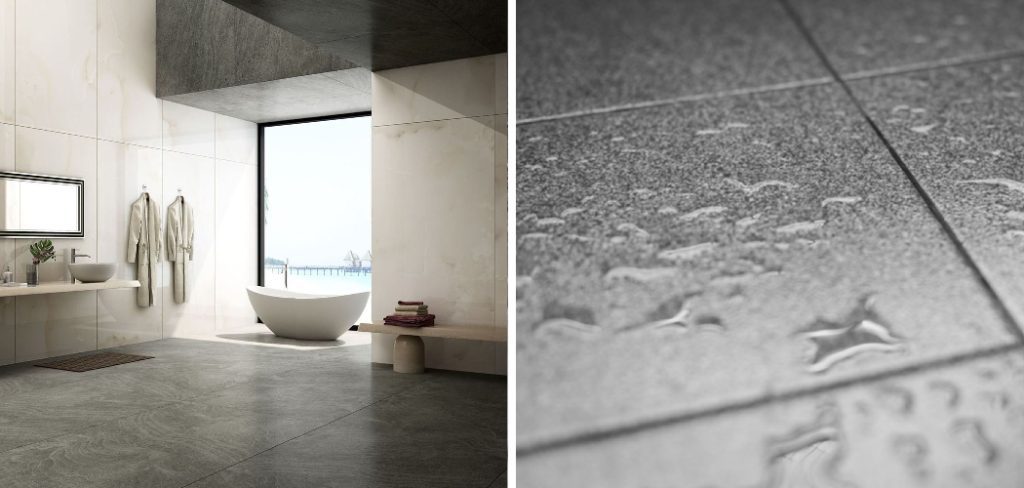
By implementing a few effective strategies, you can keep your bathroom floor dry and hygienic, creating a more pleasant and safe environment for everyone in your household. In this blogpost on how to keep bathroom floor dry, we will discuss some simple yet powerful tips that can make a big difference in maintaining a dry bathroom floor.
Why is It Important to Keep the Bathroom Floor Dry?
Keeping your bathroom floor dry is crucial for several reasons. Firstly, it significantly reduces the risk of slips and falls, which can cause serious injuries. Bathrooms are often wet environments, and a dry floor helps create a safer space, especially for children and the elderly. Secondly, a dry floor prevents the growth of mold and mildew, which thrive in moist conditions and can lead to various health issues, such as allergies and respiratory problems.
Additionally, maintaining a dry bathroom floor helps to prevent water damage to fixtures and flooring materials, extending their lifespan and saving you money on repairs and replacements. Lastly, a dry floor contributes to an overall cleaner and more pleasant bathroom environment, making it a more inviting space for everyone in your household.
Needed Tools and Materials
To effectively keep your bathroom floor dry, you will need a few essential tools and materials, including:
A Mop or Squeegee:
These tools are essential for wiping away excess water from the floor after use. Squeegees are particularly useful for larger bathrooms, while mops are more suitable for smaller spaces.
Absorbent Towels or Rugs:
Place these items strategically around the bathroom to soak up any excess water and prevent it from pooling on the floor. Make sure to regularly wash and replace these towels to prevent unpleasant odors and bacteria growth.
Bathroom Mats:
Using absorbent mats outside of your shower or bathtub can help trap water droplets from your feet before you step onto the bathroom floor. This can significantly reduce moisture in the area and prevent slips and falls.
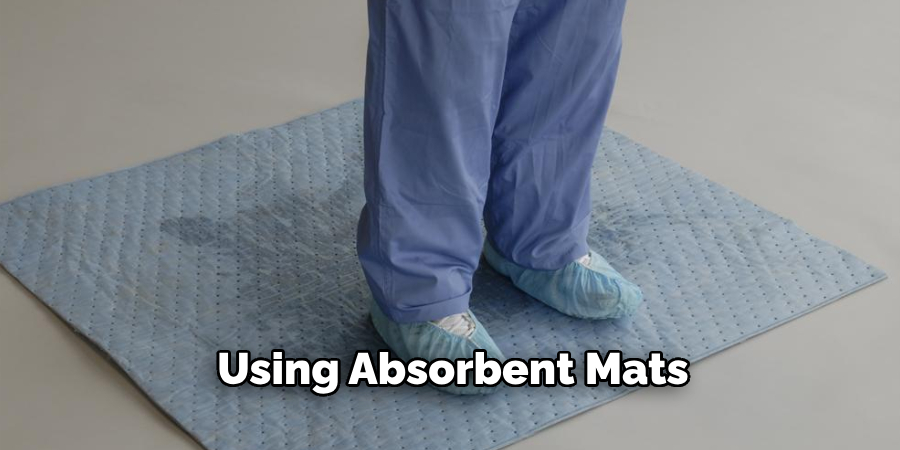
9 Step-by-step Guides on How to Keep Bathroom Floor Dry
Step 1: Start by Decluttering
The first step to keeping your bathroom floor dry is to eliminate any unnecessary items that may contribute to moisture buildup.
Remove all non-essential items from your bathroom, such as decorative pieces, magazines, or extra toiletries, that can create clutter and trap moisture. Having a tidy and organized bathroom not only makes it easier to clean but also ensures that water has fewer places to accumulate.
Keep only essential items within the bathroom and consider using storage solutions like shelves and cabinets to store them away neatly. This foundational step will make subsequent drying efforts more effective and help maintain a dry bathroom floor in the long run.
Step 2: Wipe Down Surfaces Regularly
To effectively keep your bathroom floor dry, it’s essential to wipe down all bathroom surfaces regularly. Moisture can accumulate on countertops, mirrors, walls, and fixtures after using the shower or sink, and if left unchecked, this moisture can drip onto the floor. Use a microfiber cloth or a squeegee to quickly remove water from these surfaces after each use.
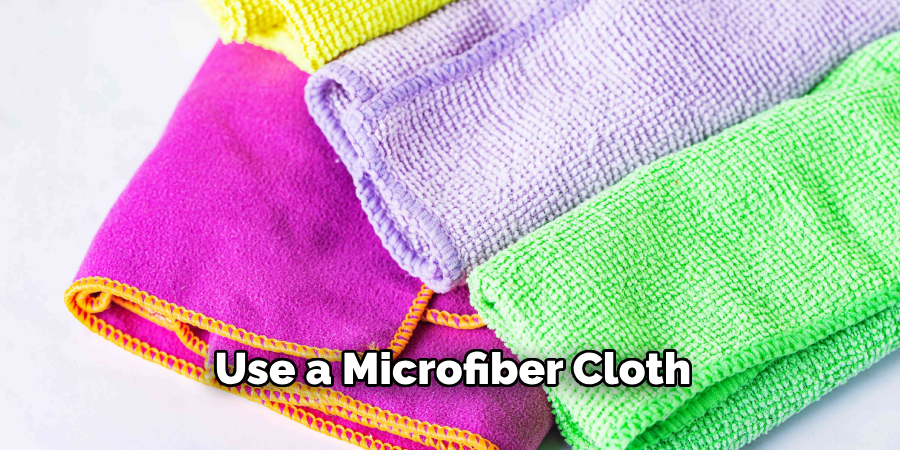
For added convenience, keep a dedicated cloth or towel in the bathroom. Make it a habit to check and wipe down surfaces daily or after each shower to prevent water pools and maintain a dry, slip-free floor. This routine task not only helps in controlling moisture but also contributes to a cleaner and more hygienic bathroom environment.
Step 3: Install Adequate Ventilation
Proper ventilation is crucial in keeping your bathroom floor dry. After a hot shower, steam and moisture can linger in the air for an extended period, creating an ideal environment for mold growth. To prevent this, install a fan or exhaust system that can effectively remove the moist air from your bathroom.
If you don’t have a fan, open windows to allow fresh air to circulate and help reduce humidity levels. You may also consider using a dehumidifier if your bathroom tends to stay damp even with proper ventilation.
Step 4: Fix Leaks and Seal Gaps
Addressing leaks and sealing gaps is a crucial step in ensuring your bathroom floor remains dry.
Leaky faucets, showerheads, or pipes can contribute to ongoing moisture issues, making it difficult to keep the bathroom floor dry. Regularly inspect your bathroom for any signs of leaks and fix them promptly. This may involve tightening connections, replacing washers, or even consulting a plumber for more significant repairs.
Additionally, examine the areas around your bathtub, shower, and sink for any gaps or cracks that could allow water to seep through. Use waterproof caulking or sealant to close these gaps securely.
Properly sealing these areas will not only prevent water from leaking onto the floor but also help maintain the structural integrity of your bathroom fixtures. By addressing leaks and sealing gaps, you can significantly reduce moisture levels and maintain a safer, more hygienic bathroom environment.
Step 5: Use a Shower Curtain or Door
One effective way to keep your bathroom floor dry is by using a shower curtain or door. Shower curtains are a simple yet practical solution that can prevent water from splashing out of the shower area.
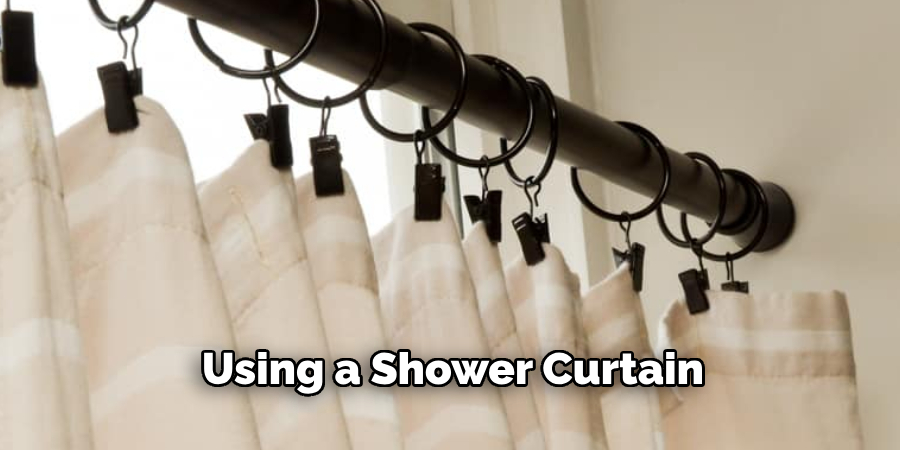
Ensure that the curtain is long enough to reach the floor and wide enough to cover the entire shower opening. For added effectiveness, consider using a weighted curtain to keep it in place and prevent it from billowing out during use.
Alternatively, if you prefer a more permanent and stylish solution, installing a shower door can be highly effective. Glass doors provide a barrier that keeps water confined to the shower area, reducing the chances of water making its way onto the bathroom floor. Frameless doors, in particular, offer a sleek, modern look while providing excellent water containment.
Step 6: Use a Bath Mat or Rug
Placing a bath mat or rug outside of your shower or bathtub can significantly reduce the amount of water that makes its way onto the bathroom floor. Choose an absorbent material that can quickly soak up any excess water from your feet and prevent it from spreading throughout the room.
Consider using two mats, one inside the shower and one outside, for added effectiveness. This will not only help keep your bathroom floor dry but also add a touch of warmth and comfort to your bathroom space. Remember to regularly wash and replace these mats to maintain their absorbency and prevent unpleasant odors.
Step 7: Use a Water-Resistant Shower Caddy
Using a water-resistant shower caddy can also help keep your bathroom floor dry. Place all your shampoo, body wash, and other shower essentials in the caddy to prevent them from dripping onto the floor. Look for caddies made from materials such as plastic, metal or bamboo that are waterproof and easy to clean.
Additionally, consider using suction cups to attach the caddy securely to the wall of your shower. This will not only help prevent spills but also save space and reduce clutter on your tub or shower ledge.
Step 8: Clean up Spills Immediately
Accidents can happen, and water spills are bound to occur in a bathroom. It’s essential to clean up any spills immediately to prevent them from creating a slippery and potentially hazardous situation on your bathroom floor. Keep a cloth or towel within reach so that you can quickly wipe up any spills as soon as they happen.
Regularly check the area around your sink, toilet, and bathtub for any water droplets and wipe them away promptly. This simple practice will not only help keep your bathroom floor dry but also prevent moisture from building up and causing damage to your fixtures.
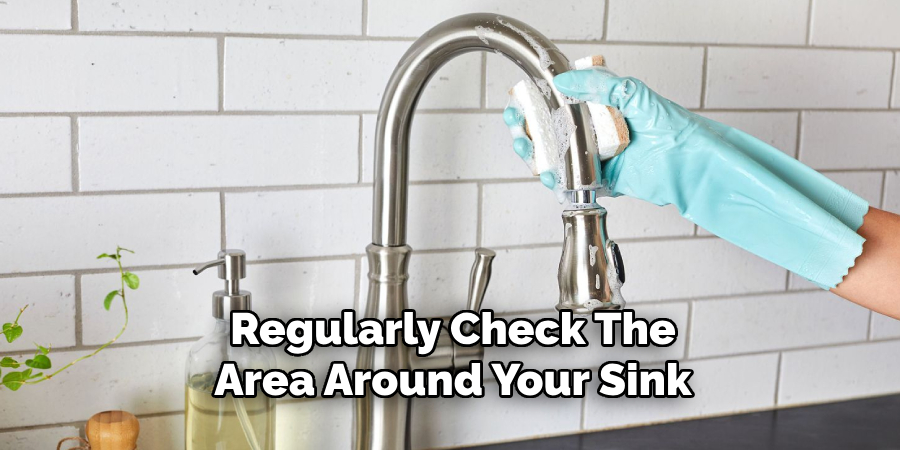
Step 9: Practice Good Drainage Habits
Lastly, practicing good drainage habits can significantly contribute to keeping your bathroom floor dry. After taking a shower or bath, make sure to drain excess water from the tub or shower before stepping out. This will reduce the amount of water that drips onto the floor and help keep it dry.
Additionally, regularly clean your bathtub and shower drains to prevent clogs that could cause water to back up and overflow onto the floor. A simple solution of baking soda and vinegar can help keep your drains clear and odor-free.
Following these steps on how to keep bathroom floor dry can help you maintain a dry and safe bathroom floor. By keeping moisture levels in check and addressing any potential issues, you can create a more hygienic and enjoyable bathroom experience for yourself and your family. Remember to regularly inspect and maintain your bathroom to ensure that it remains clean, dry, and in excellent condition.
Tips for Keeping Bathroom Floor Dry
Use Bathmats and Rugs
Using bathmats or rugs in front of your shower, tub, and sink is an effective way to prevent water from splashing onto the floor. Choose absorbent materials such as cotton or microfiber for better moisture control.
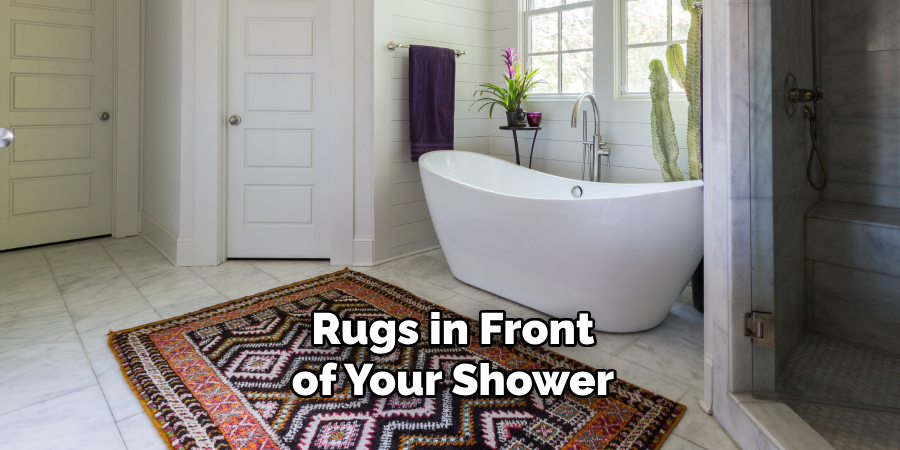
Implement a Regular Cleaning Routine
Regularly cleaning and wiping down your bathroom surfaces can help prevent water buildup and reduce the chances of slips and falls. Keep a squeegee in your shower to quickly wipe away excess water after each use.
Check Grout and Caulking
Over time, grout and caulking can deteriorate, causing gaps that allow water to seep through. Inspect these areas regularly and replace any damaged or cracked sections to maintain a watertight seal.
Install Proper Ventilation
Proper ventilation is crucial in preventing excess moisture in your bathroom. Make sure your bathroom has a working exhaust fan or open a window after showering to reduce humidity levels.
Fix Leaks Promptly
Leaky faucets, pipes, and fixtures can cause water to pool on your bathroom floor. Address any leaks as soon as possible to prevent further damage and maintain a dry environment.
Use Waterproof Flooring
If you’re planning on remodeling your bathroom, consider using waterproof flooring materials such as vinyl or tile. These options are not only durable but also highly resistant to water damage.
Regularly Inspect Shower Curtain or Door
Regularly check your shower curtain or door for any tears, gaps, or other damage that could cause water to leak onto the floor. Replace or repair as needed to ensure proper water containment.
Use Water Absorbent Towels
Keep a stack of absorbent towels in your bathroom and use them to quickly dry off yourself and any wet surfaces after showering. This will help prevent excess water from spreading throughout the room.
Invest in a Quality Bathrobe
Investing in a good quality bathrobe can also help keep your bathroom floor dry. Wearing it while getting ready in the bathroom can not only keep you warm and comfortable but also absorb any excess water from your body.
Educate Family Members
Lastly, make sure to educate all family members on the importance of keeping the bathroom floor dry and implementing these tips.
A collective effort is necessary to maintain a safe and hygienic bathroom environment for everyone. Overall, taking preventive measures and practicing good habits can go a long way in keeping your bathroom floor dry. Incorporate these tips into your routine, and you’ll have a clean, dry, and safe bathroom for years to come.
Conclusion
Keeping your bathroom floor dry is essential for maintaining a safe and hygienic environment.
By incorporating these practical strategies on how to keep bathroom floor dry—such as installing adequate ventilation, fixing leaks, using shower curtains or doors, placing absorbent mats, and practicing good drainage habits—you can significantly reduce moisture levels and prevent water-related damage.
Regular maintenance and immediate cleanup of spills will ensure that your bathroom remains a safe, clean, and comfortable space for daily use. Remember, a little effort goes a long way in preserving the beauty and functionality of your bathroom.